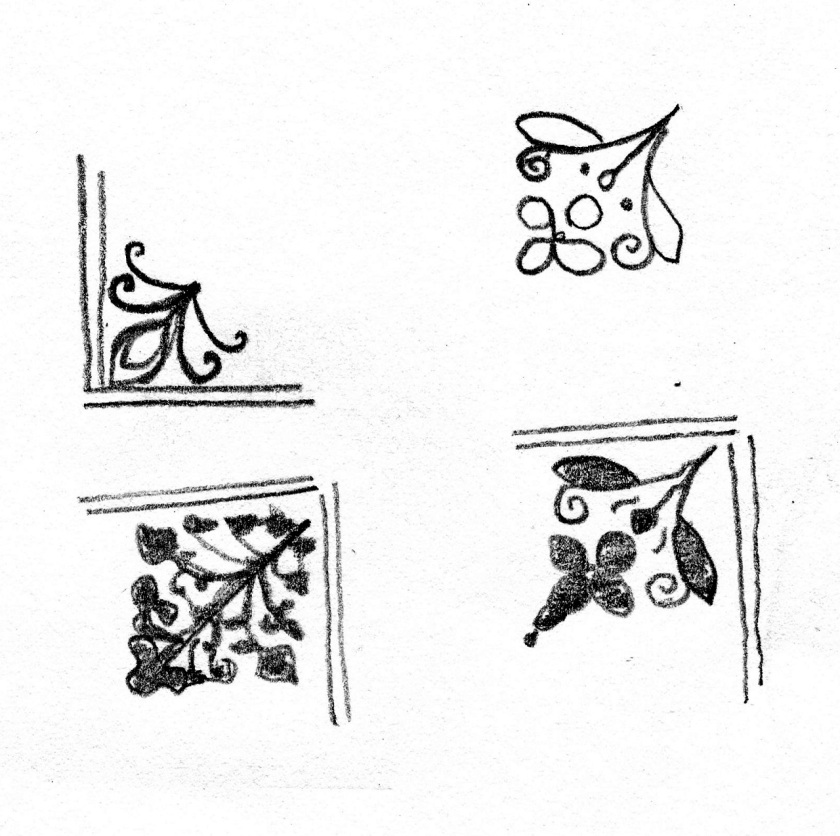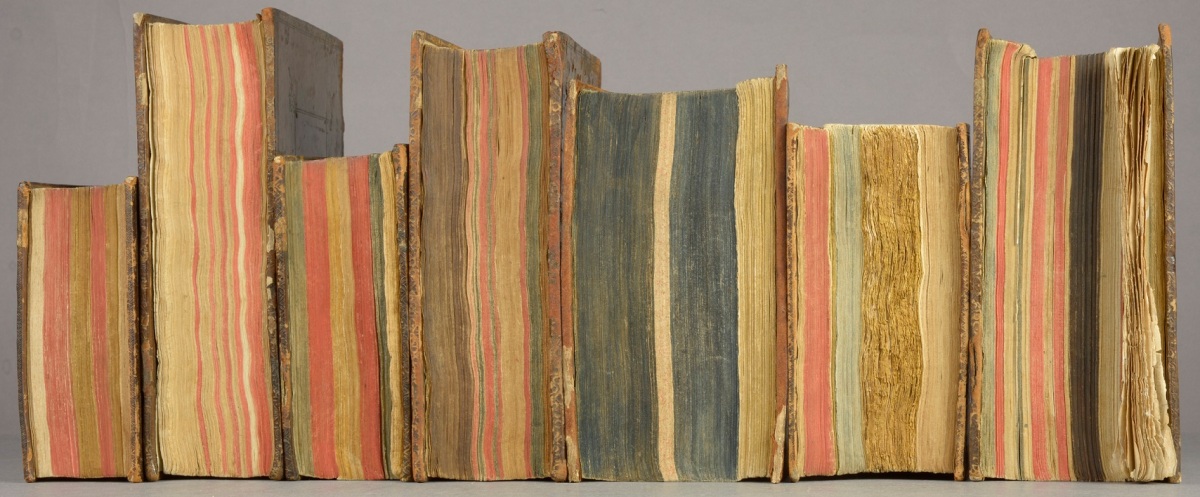Each aspect of a book’s binding holds information about its history: from the materials used, to the mechanical structure. A key part of this project is documenting specific aspects of Crouch’s bindings, both to understand their damage and to trace the history of the collection.
The following diagram illustrates some of the key components of a binding:

Book bindings can vary hugely, and often certain styles and techniques will be specific to one bindery. Crouch’s collection was probably commissioned by Crouch himself, from an Oxford binder. There are clear stylistic similarities throughout the collection. The following diagrams illustrate some of the typical features of a Crouch binding:
However, among these common stylistic features there is still a great deal of variation: from the tool of the corner fleuron used, to the material of the sewing support and the colours of the endbands.


Each of these details are documented when an item comes into the studio in order to build up a body of data on the bindings and begin to trace a timeline of when, where and how they were bound together. It will teach us a little more about the mind of Nicholas Crouch, a man who evidently took pride in the organisation of his collection.
By Nikki Tomkins
Project Conservator

One thought on “Anatomy of a binding”
Comments are closed.